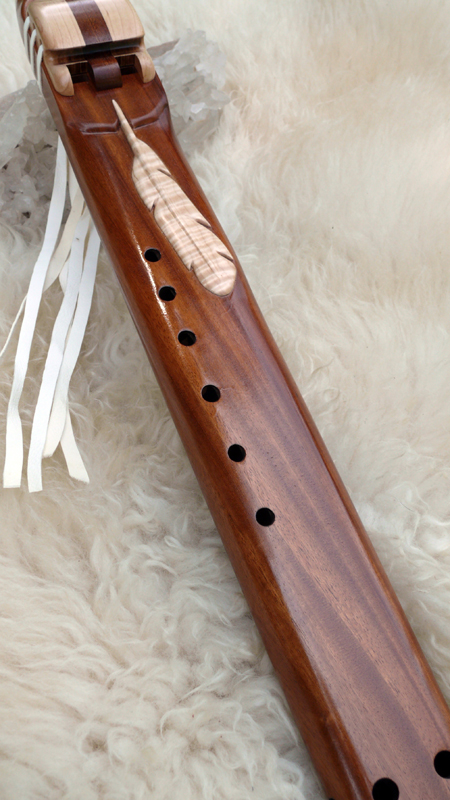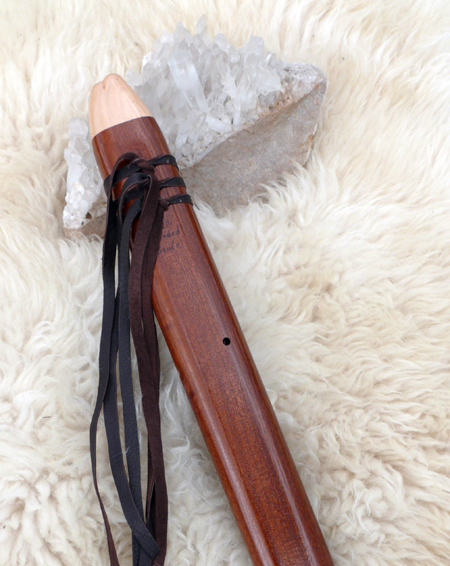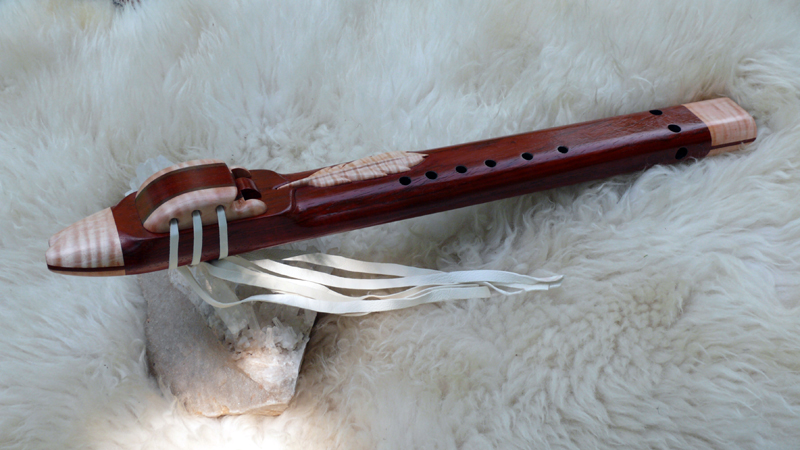The Native American flute is a magical instrument celebrated for its soulful, meditative tones. Traditionally crafted with five or six holes, it allows players to easily produce the pentatonic minor scale. The addition of a seventh hole, which I call the “Extended Scale,” opens up exciting possibilities, providing access to a broader musical range and enhancing creative expression.
The Beauty of the Pentatonic Minor Scale
The pentatonic minor scale is the heart of traditional Native American flute music. It’s a five-note scale that flows naturally, making it easy to create melodies that are both soothing and evocative. A six-holed flute offers a structured yet intuitive way to explore this scale, laying a foundation for expressive playing.


The Seven-Hole Flute: Unlocking the Extended Scale
The addition of a seventh hole introduces an extra layer of musical flexibility. This “Extended Scale” gives you access to new notes and combinations, allowing for a richer and more diverse playing experience. It expands the potential for improvisation, songwriting, and exploring different musical styles.
What the Seven-Hole Flute Offers
- Expanded Range: The additional hole broadens the range of notes you can play, giving you access to extended melodies and harmonies.
- New Scales: The extra note makes it possible to explore variations of the pentatonic scale and beyond, such as bluesy tones or modal shifts.
- Creative Freedom: Whether you’re improvising or composing, the seven-hole flute enhances your ability to experiment with unique sounds and patterns.
The addition of a seventh hole introduces an extra layer of musical flexibility. This “Extended Scale” gives you access to new notes and combinations, allowing for a richer and more diverse playing experience. It expands the potential for improvisation, songwriting, and exploring different musical styles.
Exploring the Notes in Popular Keys
The seven-hole Native American flute shines in a variety of keys, each offering a distinct voice and emotional resonance. Below, we explore the pentatonic minor scale notes for some of the most popular keys and the extended notes made possible by the seventh hole:
- Key of G#: G#, B, C#, D#, F#, G# (Extended Scale: Optional A)
- Key of G: G, A#, C, D, D#, F, G (Extended Scale: Optional A)
- Key of F#: F#, A, B, C#, D, E, F# (Extended Scale: Optional G#)
- Key of F: F, G#, Bb, C, C#, D#, F (Extended Scale: Optional A)
- Key of E: E, G, A, B, C, D, E (Extended Scale: Optional F#)
- Key of D#: D#, F#, G#, Bb, C#, D# (Extended Scale: Optional E)
- Key of D: D, F, G, A, Bb, C, D (Extended Scale: Optional E)
- Key of C#: C#, E, F#, G#, B, C# (Extended Scale: Optional D)
- Key of C: C, D#, F, G, G#, Bb, C (Extended Scale: Optional D)
- Key of B: B, D, E, F#, G, A, B (Extended Scale: Optional C#)
- Key of Bb: Bb, C#, D#, F, F#, G#, Bb (Extended Scale: Optional A)
- Key of A: A, C, D, E, F, G, A (Extended Scale: Optional B)
These notes give players the opportunity to explore unique tonalities and melodies. The seventh hole enhances the musical palette, allowing for smoother transitions between traditional and contemporary sounds.

Benefits for the Player
Improvisation: The extended scale provides more options for spontaneous, heartfelt playing.
Versatility: From traditional melodies to modern compositions, the seven-hole flute adapts to your style.
Expressiveness: The added note enhances your ability to convey emotion and nuance in your music.
Variety in Keys: A range of keys ensures you always have the right flute for the mood or setting.
Tips for Playing the Seven-Hole Flute
Experiment with New Scales: Try incorporating the additional note into your favorite melodies and discover how it transforms the mood.
Expand Your Repertoire: Use the extended scale to explore genres and styles beyond the traditional pentatonic sound.
Focus on Finger Placement: The extra hole may feel unfamiliar at first, but with practice, it will become a seamless part of your playing.
Explore Multiple Keys: Switching between flutes in different keys can inspire fresh musical ideas and broaden your artistic expression – Online Store.
Why is the extended note for some flute keys is the same as in others?
Great question! The reason the extended note for some flutes, for example both G and G# is the same (an A) is because the extended note is essentially a half-step above the highest note of the scale, which is the tonic note of the flute.
- In the Key of G: The highest note is G, so adding a half-step above it gives you A, which is the extended note.
- In the Key of G#: The highest note is G#, so adding a half-step above it also gives you A.
In both cases, the A note is added because it’s the logical next note in the chromatic scale (half-step) after the highest note. However, the A in each key has different tonal relationships depending on the root of the key:
- In Key of G, A would be the second note (major second) in the scale, creating a different harmonic relationship than in Key of G#, where A would be the second note (major second) but a half-step higher in pitch.
Thus, while the A note is the same, it serves a different function and provides different musical possibilities in each key.
Conclusion
The seven-hole Native American flute bridges tradition and innovation, offering a gateway to new musical horizons. With flutes available in various keys, you can build a collection that suits your unique musical journey. Whether you’re an experienced player or just beginning your path, the “Extended Scale” invites you to explore, create, and express yourself in ways you never imagined. Let the music guide you and embrace the limitless potential of these extraordinary instruments. If you’re ready to expand your collection, consider exploring flutes in different keys and discover the endless possibilities they bring to your music.


